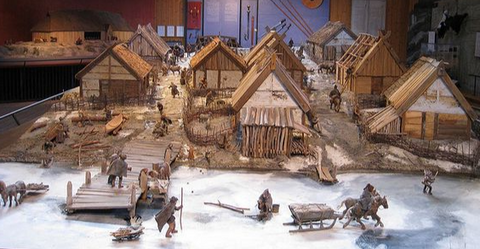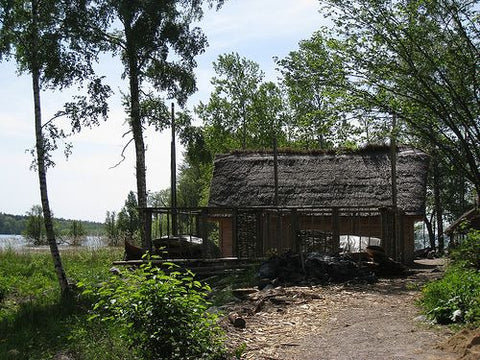Birka: From Viking Trading Center to Graveyard and Abandoned Town
Resting on the island Björkö "Birch Island" in Sweden was Birka one of the most hectic Viking trading centres at that time. It was the place where not only the Vikings but also people from other regions came and traded. But the glory of this town ended around the end of the 10th century. And it was not until 1993 that Birka was honoured as the World Heritage by UNESCO. It is 25 years earlier than the time two Viking towns Hedeby and Dannevirke became the World Heritage.
A TOWN OF VIKING TRADING CENTER CAME INTO BEING
Around the middle of the 8th century, a king formed the town of Birka. Considering the geographical traits of the site, it was perfect to become a hectic trading centre. The king founding Birka was determined to control the south of Sweden both economically and politically. As usually, politics and economy went along and flourished together.
The king lived a few kilometres away from Birka. At that time, the king was responsible for keeping order among his community and prevent his land from being looted.
PERFECT SPOT FOR TRADING
The territory of Birka stretched up to 32 acres. The place faced the Baltic Sea and was in the important Medieval trading route. Surrounding the western side of the Birka town were large and massive rocks.
Generally, the geographic traits of this site both help facilitate the trading activities and observe the approaching ships which might present a threat to the local people.

The reconstruction of the Birka town which once was a hectic Viking trading centre
The most famous commodity from Birka was fur, iron goods, and craft products. People from many regions around Birka, or England, Frisia, and the east went there to do business.
A TOWN THAT FLOURISHED AT AN INCREDIBLE SPEED
After two years of being a hectic trading centre in the south of Sweden, Birka flourished and changed a lot. The population during its glorious period was about 1000 inhabitants.
This site had its own Thing which was a kind of law and governing system in the Viking age. It would be held under the control of the King or the Earl. The free men would gather around to listen and to discuss the laws or to make the political decisions.
But the glory of Birka came to an end after two centuries of success
ABANDONED TOWN AND MAJOR GRAVEYARD
The end of the 10th century witnessed the collapse of the Birka town. Many theories have been put forward to explain why the inhabitants abandoned the town.

The reconstruction of Viking house in the site of Birka
But the theory that is generally accepted revolves around the rise of land masses which affecting the water level in Birka. As the harbours became useless because of the lower water level, the 2-century-long economic activities had to cease. Many of its inhabitants moved or were moved to the newly-founded town Sigtuna.
These days, although being no longer an important economic site, Birka serves to be a hot archaeological site.
If we happen to visit Birka, we might observe the green hills featuring the island. And those hills are actually the burial mounds dating back from the Viking age. There are thousands of them. By far, the archaeologists have concluded that six major graveyards surrounded Birka in the Viking Age.

The burial mounds that are commonly observed in Birka
One famous excavation in Birka is the BJ581. Inside the BJ581 grave, the archaeologists found out the remains of a Viking woman. What's interesting here is that the items buried with her were the weapons and two horses, all of which presented the warriors.

Inside the BJ581 that the archaeologists excavated.The remains of the woman were placed among many types of weapons like axe, sword, bow and arrows, and shields. Two horses were also buried with her inside the BJ581
So this opens a question as to whether the woman inside the BJ581 was a female warrior. This leads to the reconsideration of the historical existence of the Viking shieldmaiden in the Viking age.




